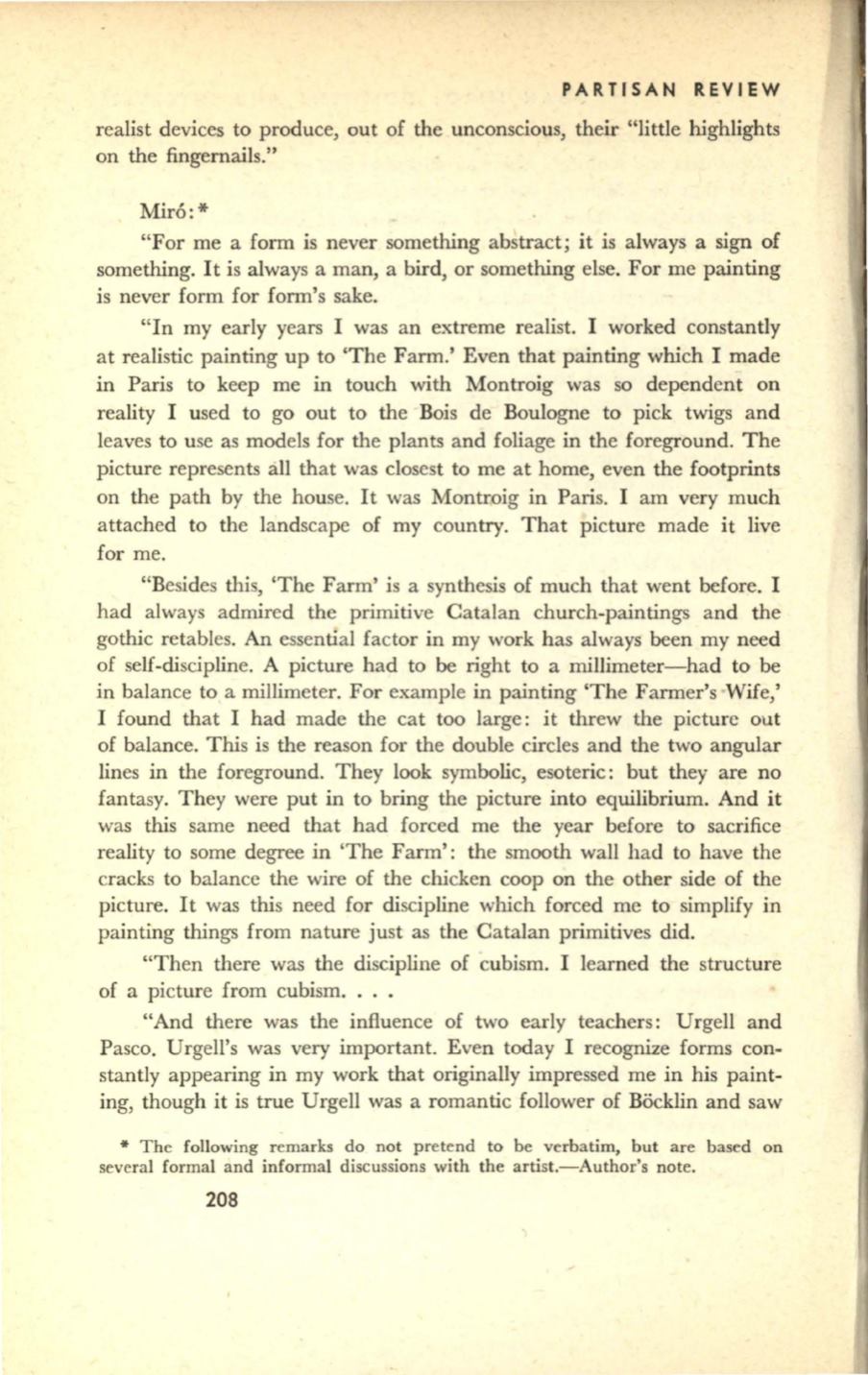
PARTISAN REVIEW
realist devices to produce, out of the unconscious, their "little highlights
on the fingernails."
Mir6:*
"For me a form is never something abstract; it is always a sign of
something. It is always a man, a bird, or something else. For me painting
is never form for form's sake.
"In my early years I was an extreme realist. I worked constantly
at realistic painting up to 'The Farm.' Even that painting which I made
in Paris to keep me in touch with Montroig was so dependent on
reality I used to go out to the Bois de Boulogne to pick twigs and
leaves to use as models for the plants and foliage in the foreground. The
picture represents all that was closest to me at home, even the footprints
on the path by the house. It was Montroig in Paris. I am very much
attached to the landscape of my country. That picture made
it
live
for me.
"Besides this, 'The Farm' is a synthesis of much that went before. I
had always admired the primitive Catalan church-paintings and the
gothic retables. An essential factor in my work has always been my need
of self-discipline. A picture had to be right to a millimeter-had to be
in balance to a millimeter. For example
in
painting 'The Farmer's Wife,'
I found that I had made the cat too large: it threw the picture out
of balance. This is the reason for the double circles and the two angular
lines
in
the foreground. They look symbolic, esoteric: but they are no
fantasy. They were put in to bring the picture into equilibrium. And it
was this same need that had forced me the year before to sacrifice
reality to some degree in 'The Farm': the smooth wall had to have the
cracks to balance the wire of the chicken coop on the other side of the
picture. It was this need for discipline which forced me to simplify in
painting things from nature just as the Catalan primitives did.
"Then there was the discipline of cubism. I learned the structure
of a picture from cubism. . . .
"And there was the influence of two early teachers: U rgell and
Pasco. Urgell's was very important. Even today I recognize forms con–
stantly appearing in my work that originally impressed me in his paint–
ing, though it is true Urgell was a romantic follower of Bocklin and saw
*
The following remarks do not pretend to be verbatim, but are based on
several formal and informal discussions with the artist.-Author's note.
208


